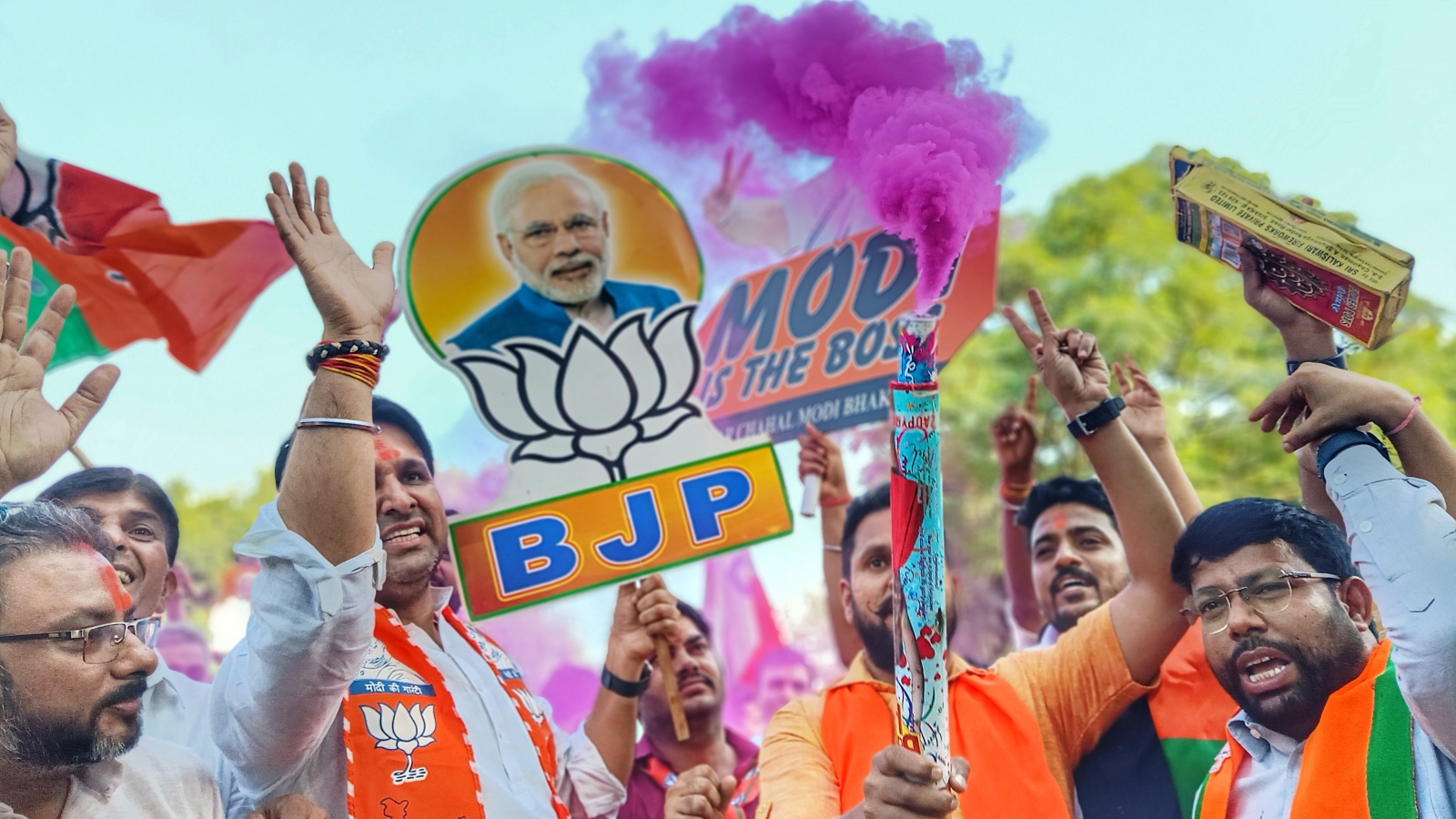The mandate of the 2024 Haryana Assembly election is historic. For the first time, a party has formed the government for a third consecutive term in the state. This outcome defies conventional political wisdom and exit polls, especially in a state known for its fluid politics, where strong leaders and dynasties have long dominated the political landscape.
First and foremost, this mandate reaffirms Haryana’s trust in the leadership of Prime Minister Narendra Modi. The people of Haryana recognised what was at stake in these elections. Given the proximity, a Congress victory in Haryana would have posed a severe challenge to Delhi. There could have been frequent disruptions, protests, and blockades targeting the capital, all under the guise of various movements. It would have rendered the functioning of the central government difficult and potentially derailed the India story. Haryana, a deeply nationalistic state, rejected the anarchist and scorched earth agenda of Rahul Gandhi.
The people have validated the BJP’s politics and policies over the last decade. The BJP has been a disruptive force in Haryana’s political culture, which has historically revolved around caste and kinship-based patronage, where the rule of law was often secondary. This was particularly evident in government job selections, where nepotism and casteism dominated. Under the BJP government, the selection process became fair and transparent, leading to over two lakh government job appointments, with every caste and region benefiting from the new system. This shift was a game changer, resonating deeply with voters, particularly the youth.
Another pivotal factor was the decision to appoint Nayab Singh Saini as chief minister. Saini, who rose through the party ranks and comes from a non-dominant backward caste, sent a powerful message to both the party cadre and the public — that anyone, regardless of social, economic, or family background, can rise to top posts in the BJP.
This victory also highlights the strength of the BJP’s organisational structure. Despite facing an arduous election due to anti-incumbency and a resurgent Congress emboldened by recent Lok Sabha results, the BJP held its ground. Several leaders defected to the Congress, falling prey to its propaganda of inevitable victory. Yet, despite the attrition, the BJP leadership, both at the state and central levels, managed to retain its core support base. This was particularly evident in the BJYM, the youth wing of the BJP.
Many of the district office bearers and youth wing members come from socially disempowered castes and economically weaker backgrounds. Some are carpenters, others run small cloth shops, and many come from lower-middle-class or poor families. They stood firm in the face of immense challenges, including defections and attempts to demoralise them. They faced mockery, taunts, allurement and even threats from an aggressive Congress but remained resolute. I heard the same sentiment from them everywhere: “We will win our seat, and under no circumstances can Congress be allowed to return.” Their dedication was unwavering as they went door-to-door, organised drawing room meetings, led bike rallies, and showed up in force with the candidate, even in areas where victory seemed unlikely. It is often overlooked in mainstream political commentary, but the BJP is the party of ordinary people who do extraordinary work.
In August, when momentum seemed on the side of the Congress, the BJYM took the fight directly to the Congress stronghold of Rohtak. On August 27, 1,000 youth and student leaders under the age of 30 joined the BJP, with 60 per cent of them belonging to the Jat community. It was a major morale booster and helped neutralise Congress-funded propaganda, showing that the youth were firmly with the BJP. Across Haryana, it slowly became evident that the aspirational youth, cutting across caste lines, favoured the BJP, which represented the optimism and ambition of the new India. Unlike the Congress, the BJP’s campaign and agenda reached out to all communities.
The inclusive vision of the BJP resonated deeply with Dalits and marginalised communities, who still vividly recall the social oppression and violence they faced under Congress rule. The BJP’s non-discriminatory welfare schemes, which were based on objective criteria, helped dismantle the “forced labour” in politics that had long held marginalised groups captive. They would come quietly to village meetings and gatherings; during the door-to-door campaigns, they would simply listen positively. They finally chose to make their voices heard through the power of their vote, proving all the pollsters wrong.
Women emerged as some of the most vocal supporters of Prime Minister Modi, even when men in their families leaned toward Congress. The BJP’s welfare schemes not only benefited farmers but also extended to marginal farmers and agrarian labourers — groups whose interests had long been overlooked by the opposition. As in previous elections, urban voters and educated youth also remained steadfast in their support for the BJP. The BJP emerged as a party of optimism and aspiration, in contrast to Congress, which was increasingly seen as a party of cynicism and anarchy.
This broader inclusivity became a cornerstone of the BJP’s appeal, contributing significantly to its historic victory. While Congress only talked about “36 biradari” (communities), the BJP gave them representation and emerged as the successful aggregator and consensus builder based on a common aspirational agenda.
The writer is National Vice-President of the Youth wing of BJP and national in-charge of the youth wing of Haryana BJP



